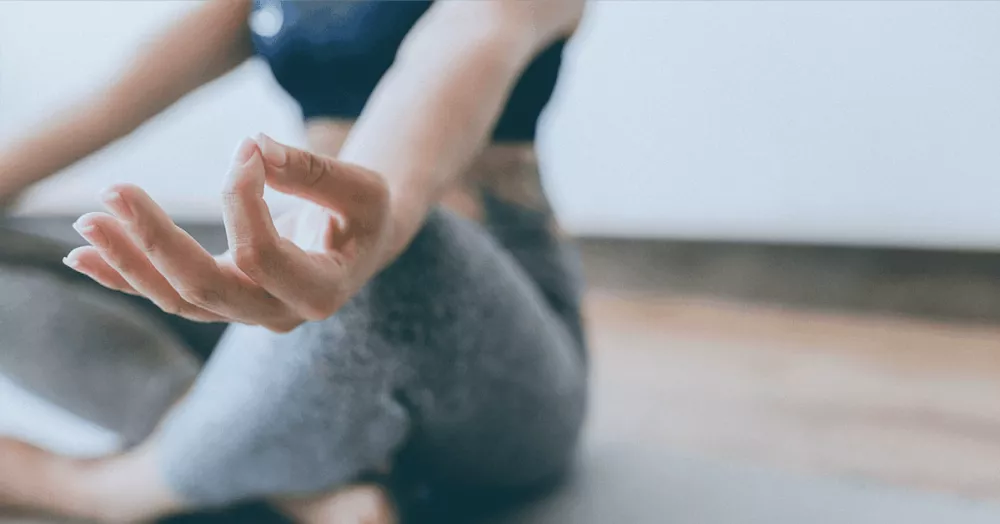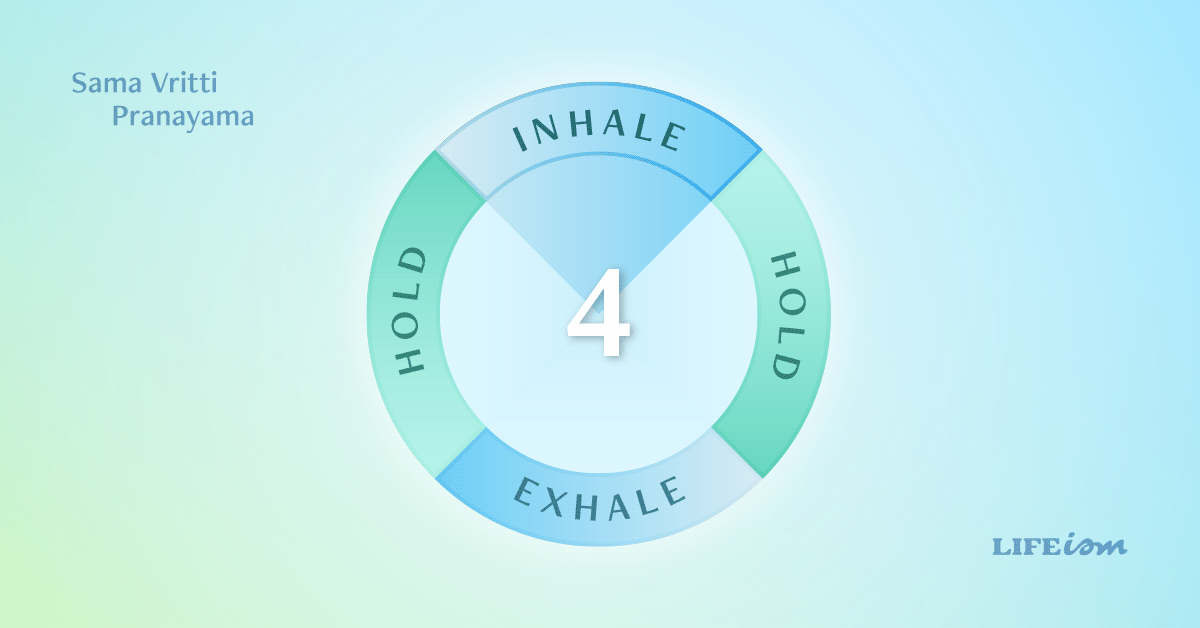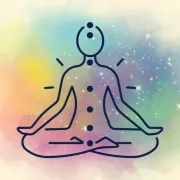6 Easy Meditations to Practice Everyday
We all know that meditation is good for us. But if sitting for hours in one position is not for you, then this article offers simple daily meditation methods.

"If you have time to breathe you have time to meditate. You breathe when you walk. You breathe when you stand. You breathe when you lie down.”
- Ajahn Amaro
We may not realize it- but we are all chasing a sweet, dopamine-filled butterfly every day. From the moment we get up to when we hit the sack, we are constantly surrounded by stimuli. So much so, that happiness, and even success today, has become derivative of a series of dopamine rushes. Simply put, dopamine is a neurotransmitter, strongly associated with feelings of motivation, reward, and reinforcement. However, what is supposed to be a ‘feel good’ responsible for key body functions, is now being harnessed by giants in the tech, food, lifestyle industries wiring us to chase these highs – Instagram likes, Facebook comments, fast foods, fads to name a few. On the flip side, the comedowns have started to throw us off our game significantly – procrastination, unhealthy lifestyles, addiction, lack of focus.
Mediation is one of the ways to significantly help us improve mental balance, focus, and awareness. With its plethora of benefits, mediation still feels slippery to some of us; the reason is simple- mediation is counterintuitive to our nature- it involves not doing anything, letting go of our innate mind chatter. If you are new to meditation or are looking to integrate it as a habit, we have listed 6 simple ways to include meditation in your daily routine. These are not complex asanas but simple-to-practice exercises to increases our awareness. We hope that these daily practices bring solace and help you feel the transformative power of conscious living.
One-minute awareness
It may sound too easy to be true, but focusing for just 60 seconds can help us reset our mind, reduce anxiety and boost focus and energy levels. This is one of the simplest breath control techniques -the best part, we can fit this meditation anywhere in our routine- in a parked car, at lunch breaks, before meetings, before bed.
- To meditate, sit in a quiet, comfortable place.
- Take a moment for yourself. Set a timer for 60 seconds.
- Then, close your eyes, and start focusing on your breath. Try to direct your awareness on your breath. It’s natural for thoughts to come and go, and if you find yourself losing focus on a thought, try to bring your attention back to your breathing.
- Silently focus on your breaths, the rising and falling lungs.
- After your meditation, slowly open your eyes. Take a moment to notice a calmer state of mind.
Eating Consciously
We are a generation of fast foods- not just in terms of their cooking speed, but also the speed at which we consume it. For most of us, mealtime usually means staring at a screen, gorging down our meals, and getting on to the next thing on our list. Conscious eating is a form of practicing mindful awareness, moment to moment. It involves being mentally present on the dining table (sans devices and distractions) and consuming food mindfully, focusing the sensual awareness on the food and the experience of partaking in it. Conscious eating has shown to have several health benefits too- like improved digestion, better eating habits, and weight management.
How to practice conscious eating
- Fix a time to eat, this helps us plan and ensure that we are not rushing through our meal.
- Step away to sit at a clean dining table without devices and distractions. Try to avoid eating on a work desk or couch.
- Before you start eating, take a few deep breaths. Notice how you’re feeling before you eat. This helps us tune into our bodies and gauge hunger.
- Pay respect to the food in front of you. Just like humans react to positive reinforcements, food does too. Notice the food in front of you and reflect the feeling of gratitude for it- be appreciative and mindful of the hard work that’s gone into bringing this food to the table- yours, and everyone in the journey.
- Take smaller bites, notice its texture, flavor, and taste. How does it make you feel? Can you taste the different ingredients in the recipe?
- Consider how you’re feeling throughout the meal- full, satisfied, hungry for more. Listen to your senses.
- When you are done eating, take a moment to observe how you’re feeling and how the meal was.
Sama Vritti Pranayama or Box Breathing
Ever notice how our breaths tend to pick up when we are stressed or anxious? Shortness of breath is a sign of stress and anxiety. Breath control is a beneficial way of focusing on the breath and increasing mental clarity. Sama Vritti Pranayama also called square breathing or box breathing is an ancient technique to practice breath control. Sama Vritti means equal fluctuations in Sanskrit. Simply put, it is an inhalation and exhalation exercise for the same duration of time. Sama Vritti breathing can help reduce stress, ease anxiety, soothe the mind and improve focus.

To practice Sama Vritti,
- Find a comfortable seat with back support and place your feet on the floor.
- Close your eyes and bring your focus to your breath.
- Inhale slowly through your nose, slowly counting to 4 seconds. Feel the air filling your lungs.
- Now, hold your breath and count slowly up to 4. Try not to block your airways while doing this.
- Finally, exhale slowly to a count of 4.
- Hold the exhale for 4 counts.
- Repeat steps 1-4 for 4 minutes or until you feel calm and focused.
Caution: It's not recommended to perform box breathing when you are sick, as it can overload the heart and other organs. You should not engage in box breathing training for problems with the heart or blood vessels. Please consult your physician before you try this.
Step back to refocus
It is very common for us to get carried away with the details of our everyday lives. We are so focused on getting through our quests that we lose sight of our larger goals. For instance, we get so overworked on meeting a deadline that we forget the ‘why’. A great way to guide your focus to the present is by stepping off, taking a moment away from the task at hand, and practicing a 60-second meditation. This will reconnect us to our inner self, put things in perspective, and bring our focus back from the tiny details to our vision.
Connecting with nature
Everything in nature is made up of 5 basic elements- water, fire, air, earth, and space. These elements are known to carry their energies and are the building blocks of our bodies and everything around us. As we get entangled in our tech-supported lives, we lose connection with nature and its energies. An effective way to inculcate meditation in our lives is by reconnecting with nature around us.
Make it a point to spend some time in nature – touch, feel and smell the warmth of the earth, feel the coolness of water (from a pond, waterfall, or a river). Feel the wind on the skin, observe the power of a flame from a candle or lantern, notice the leaves dancing in the wind, and as the clouds float by.
The more we practice this, the more we can understand and connect to the universal powers of healing and awareness.
The transformational power of "routine"
For many of us, household chores take up a significant portion of our time, so instead of thinking of them as tedious chores, they can be turned into mindfulness rituals. So instead of letting our mind wander into an abyss of thoughts, try to be attentive to the moment and the task at hand. This simple practice of being present can make us more reflective and attentive.
The next time you cook dinner or do your laundry, bring your focus to the present moment. The goal is to be completely immersed in what you are doing, instead of pondering on the mental noise. It helps to connect through all the senses.
For example, when ironing clothes, pay attention to the fabric, feel its texture, how it feels, how it smells. Pay attention to the patterns and ornaments, how the light in the room affects the play of color. Make the ritual of folding clothes a kind of yoga practice, be attentive and aware in every movement.
With this approach, every little action becomes a small yet significant ritual. This adjusts our presence to the moment, and even to the world around us - everything falls into a state of harmony.
Benefits of practicing meditation
In addition to increasing our awareness and tuning into our thoughts, meditation has proven benefits for the mind and body. Practicing even for a few minutes every day can dramatically improve your overall health, reduce stress and blood pressure, and increase concentration and productivity.
Improves productivity
Mindfulness can be defined as a sense of being present. This means being completely focused on the current activities, environment, and events around us. Meditation converges our focus to the present moment and increases concentration. We become less likely to lose focus on superficial thoughts and actions, thus improving productivity.
Improves mental and physical health
A study found that meditation lowers the production of the hormone cortisol and reduces inflammations and stress hormones by 15%. Another article published in ScienceDirect suggests that daily meditation helps regulate our emotions, boost positive emotional response. With daily practice, we are more inclined to make better choices and handle the shortcomings better.
Improves relationships at work and home
Research by John Darwin in 2015 shows that the practice of meditation is associated with higher emotional development, which is not surprising given that meditation requires a high level of self-awareness. Another research published by the National Center for Biotechnology Information (NCBI) also found that we tend to develop empathy and altruism by studying meditation.
Thus, helping us understand others better, communicate more efficiently with them, and respond better to their emotions. This naturally leads to better relationships both at work and at home.
Boosts creativity
Finally, regular meditation exercise at work improves creativity, according to an article from the Harvard Business Review. 10-12 minutes of mindfulness mediation is proven to boost creativity while encouraging innovative thoughts.
Conclusion
Our mind is something that complements us but does not define us. It helps us tune our inner self with the universe. When we meditate, we become observers of our thoughts and gain the power to control them. We notice what we did not see before, and we fill the soul with love and the mind with light.
If during meditation you did not manage to achieve a state of peace and inspiration at first, continue to train anyway. Just like any other muscle, our brains become stronger as we practice meditation and mindfulness.
We hope you find these methods of inculcating meditation useful.








Comments
It really made me consistent in my meditations, it was difficult for me prior as I used to try it the harder way